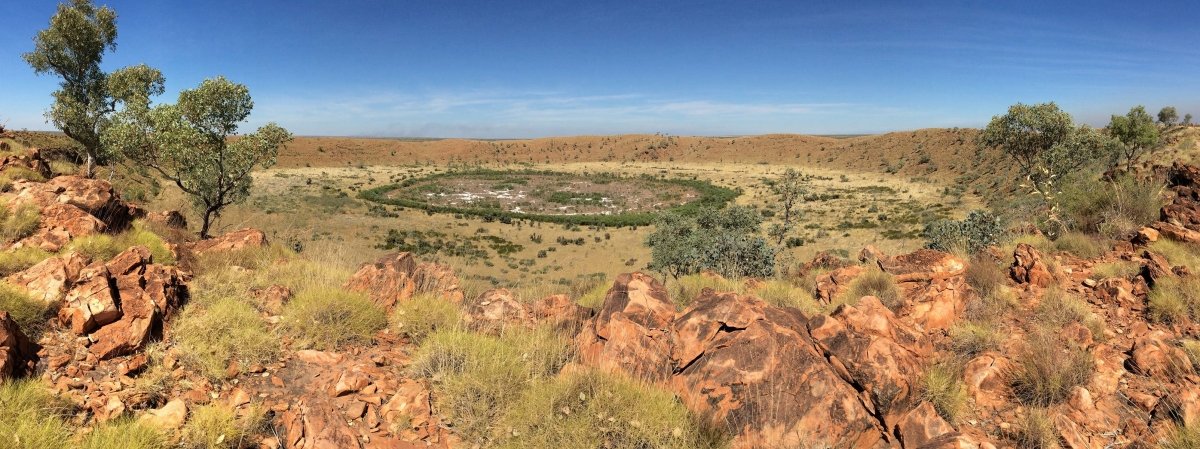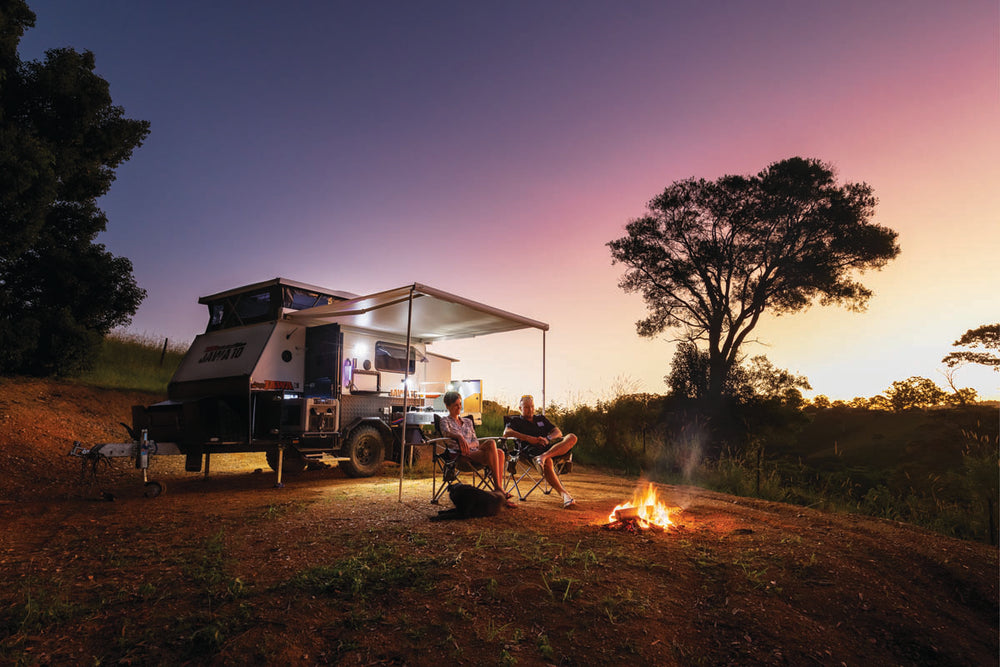

Wolfe Creek Crater, WA
Head into Western Australia’s outback and discover an otherworldly site steeped in mystery and cinematic lore.
It’s been 20 years since the twisted, not-so-jolly swagman, Mick Taylor, first terrified audiences in Greg McLean’s horror film Wolf Creek. Actor John Jarratt portrayed him as a loveable Aussie larrikin, like Steve Irwin crossed with Mick Dundee, but with a sadistic slant that harked back to the horrors of serial killer Ivan Milat.
Fortunately, the circular crater that inspired the film’s (deliberately misspelt) name and setting is far more welcoming. Formed around 300,000 years ago by a 50,000-tonne meteorite travelling at 15km a second, Wolfe Creek Crater in Western Australia spans an astonishing 880 meters in diameter. Although long known to local Aboriginal communities, it was only discovered by Europeans during an aerial survey in 1947. Its remarkably well-preserved state, due to its relative infancy and location in a dry, arid environment, makes it one of the most pristine meteorite craters in the world.
Geologists believe the impact not only created a hole in the Earth’s surface but also shattered rocks below. The meteorite and surrounding rocks were melted, causing an explosion that scattered debris. As a result, some of the rocks remaining in the crater are from the meteorite itself.
Surrounded by rugged outback terrain, this vast crater is a stunning spectacle. The free camping ground, bushwalking trails and incredible stargazing opportunities make it well worth your time — if you can set aside the site’s sinister cinematic connotations.
Due to the location’s remoteness, you should prepare for any unexpected situations before setting off. Facilities are sparse, with no water available, so be sure to bring plenty. The park does have bush toilets, picnic tables and an information shelter.
Getting to Wolfe Creek is a long, bumpy, but rewarding ride. Take the Great Northern Highway to Halls Creek, then continue on the unsealed Tanami Road for about 130km. Turn onto Wolfe Creek Road, a smaller dirt road, and travel 23km to reach the crater. We recommend refuelling and stocking up on supplies in the small town of Halls Creek.

Conventional cars can be driven to Wolfe Creek Crater during the dry season, from May to October. However, a 4WD is recommended, as Tanami Road and Wolfe Creek Crater Road are unsealed and rough, particularly after rain. It’s important to drive slowly, as the sharp rocks on the gravel road can pose a hazard to tyres. Check local weather and road conditions, as heavy rain can make the roads impassable. Allow around three hours for the journey in a 4WD, and more time if driving a regular vehicle.
Once at Wolfe Creek, take a hike along the crater rim to absorb the area’s natural beauty and experience breathtaking panoramic views of the surrounding outback landscape. You’ll also find a trail leading to the crater floor, where you’ll be able to better appreciate its unique geological features, with a steep and rocky 400m return walk to the top for those after a physical challenge.
To fully immerse yourself, spend the night at the designated camping site (fees apply, and it operates on a first-come, first-served basis) and enjoy the unpolluted, clear skies of the outback for an unforgettable stargazing experience.

Fast facts for visiting Wolfe Creek Crater
Location
Located about 150km southwest of Halls Creek, in the remote outback of Western Australia, within the Kimberley region. The park lies along the Tanami Road, an unsealed route that connects Halls Creek to the Northern Territory.
Facilities
Wolfe Creek Crater National Park has basic camping facilities, including a designated camping area, bush toilets and an information shelter detailing the park’s history and points of interest. As mentioned, you can refuel your vehicle and stock up on water, food and other essentials in Halls Creek, as the area is very remote and has no services nearby.
Useful Information
-
Wolfe Creek Meteorite Crater National Park
P: 08 9168 4200
-
Halls Creek Tourism
P: 08 9168 6262
- NASA Earth Observatory
THE NEXT STEP
If you want to learn the latest caravan news, find the most innovative new caravans and camping gear or get inspired to plan your next outdoor adventure off the beaten track, subscribe to our weekly newsletter. We promise to send you only the best content.
Related articles:
Explore Gwalia: Western Australia’s living ghost town
The Tin Horse Highway outside Kulin, Western Australia







